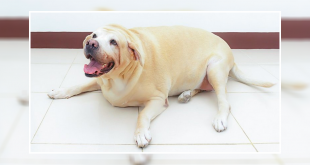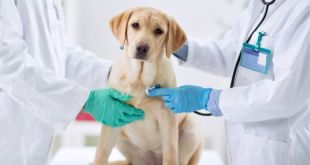Parvovirus is quite possibly the most well-known and conceivably lethal dog disease. It tends to be carried on your dog’s hair and feet or your shoes and dress.
While bleach can kill the virus, sterile surfaces can rapidly be reinfected. Parvovirus can be prevented; however, it kills 4 out of 5 dogs if it is not treated in time.
If you are an experienced or new dog owner, you have most likely heard the term parvovirus (or “parvo”) quibbled about. You might have even taken your dog to get his parvovirus immunization. Here is all that you need to think about parvovirus in dogs.
What is Parvovirus?
Parvovirus is a profoundly infectious and conceivably dangerous sickness in dogs that happens worldwide. It is brought about by parvovirus strains called CPV-2a, CPV-2b, and CPV-2c. Parvovirus assaults the cells that line a dog’s digestive system.
The digestive system retains supplements, water, and salt; it holds the microorganisms in his stomach back from attacking the rest of the body. By obliterating the small digestive tract’s coating, parvovirus prevents the small digestive tract from working appropriately.
In the long run, the gastrointestinal surface can be excessively harmed to the point that it starts to separate, and the microbes ordinarily restricted to the gut infiltrate the digestive system and enter the circulatory system. This causes significant liquid loss from the loose motions and boundless disease inside the body.
Parvovirus additionally focuses on your dog’s bone marrow and white platelets. This debilitates his immune system and, in the end, shuts down.
How Does Parvovirus Spread in Dogs?
Parvovirus is frequently spread when dogs eat or sniff tainted crap. As NCBI indicated, dogs shed “35 million viral particles (multiple times the common irresistible portion)” in a solitary ounce of crap.
For your reference, it just takes 1,000 viral particles for an unvaccinated dog to become contaminated with parvovirus. Parvovirus can be shed in dogs’ defecation 3 a month after recuperation.
Parvovirus can be spread through direct contact with a tainted dog or wild creature. It additionally can be sent by backhanded contact with a tainted article like an outfit, food or water bowl, or a toy.
What Dog Breeds Have More Chances of Getting Infected with Parvovirus?
Parvovirus can influence all dogs; however, little dogs under 4 months old have the most elevated danger. Unneutered male dogs are twice as reasonable as unspayed females to foster the infection.
Unvaccinated dogs are more bound to be hospitalized with parvovirus. They are bound to be conceded in July, August, or September.
Bigger breeds like pit bull terriers, Doberman, English spaniels, German shepherds, and Labrador retrievers are more susceptible to parvovirus.
Can Humans Get Infected with Parvovirus?
As per the Center for Disease Control (CDC), pet dogs and felines can’t transmit parvoviruses to people. Dogs and felines are susceptible to a few parvoviruses, yet none of these can’t be transmitted to people.
 DogExpress
DogExpress



















 in Chandigarh, India.
in Chandigarh, India. 

